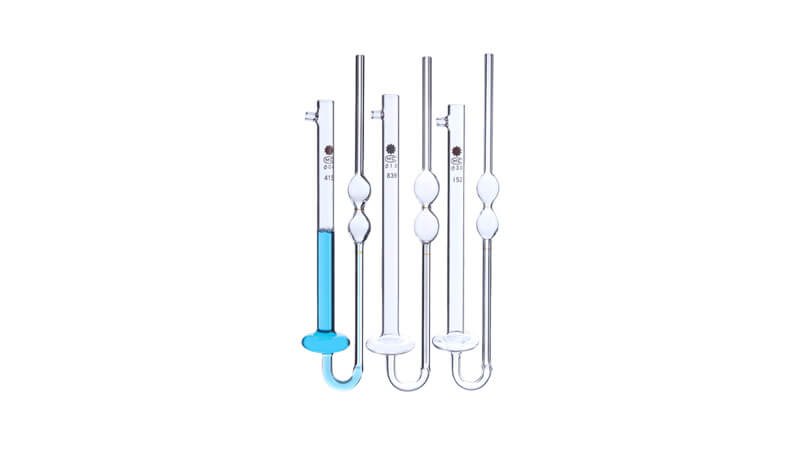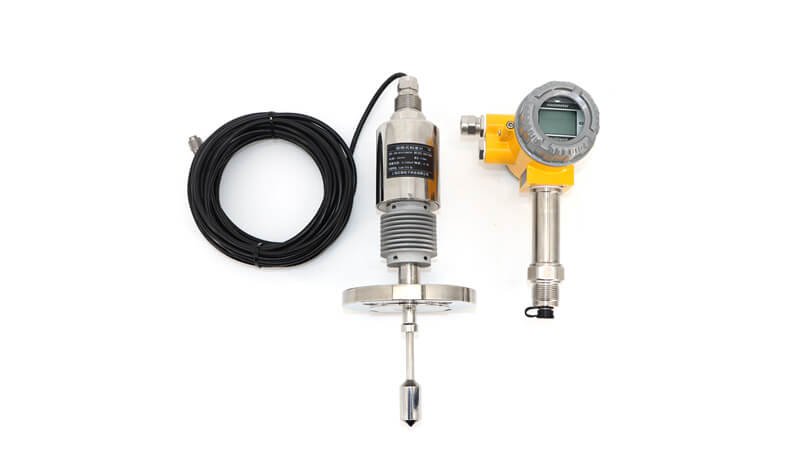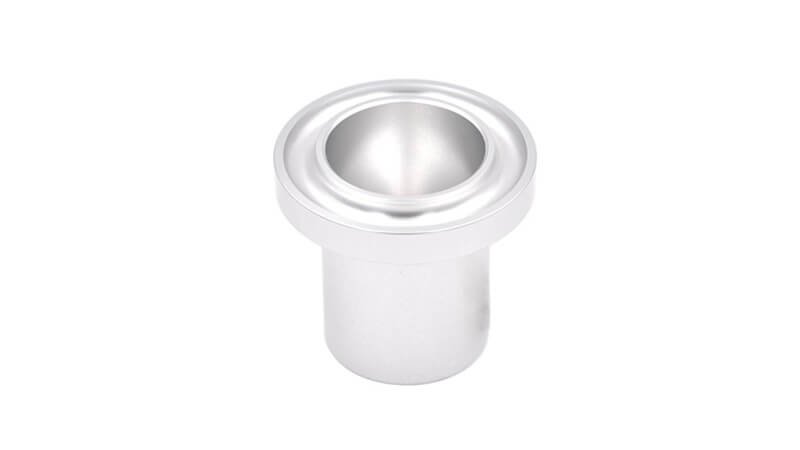Struggling with inconsistent product quality? Choosing the wrong viscosity measurement method can lead to costly errors and affect your bottom line. Let's explore your options.
You can measure viscosity using various methods like rotational, capillary, falling ball, vibrational, or cup viscometers. Each method has unique principles and is suited for different fluid types and application needs.
Selecting the right method is key. I've seen how choosing the correct instrument, like one from our Martests range, makes a huge difference for discerning buyers like Jacky from Italy. He needs reliable results for his lab instrument distribution business, and so do you. At Martests, we believe leveraging the right viscometer is essential for accurate viscosity measurements, tailored to your specific application needs. Our commitment to top quality ensures you achieve these reliable results, which helps optimize your products and processes. So, let’s look at the different ways to measure this crucial property.
How Do Rotational Viscometers Accurately Measure Fluid Resistance?
Need precise control over shear conditions for your fluids? Other methods might not give you the full picture, especially for complex materials.
Rotational viscometers measure the torque needed to rotate a spindle in a fluid at a set speed. This directly assesses dynamic viscosity, ideal for Newtonian and non-Newtonian fluids.

Rotational viscometry is a widely used technique, and it's something we specialize in at Martests. The principle is quite straightforward. A spindle of a specific geometry is immersed in the test fluid. An electric motor drives this spindle at a precise rotational speed. The more viscous the fluid, the more torque is required to maintain this speed. The viscometer measures this torque, and from the torque, spindle geometry, and rotational speed, it calculates the dynamic viscosity.
One of the biggest advantages is their versatility. They can handle a wide range of viscosities, from very thin liquids to thick pastes. Importantly, they allow you to study how viscosity changes with shear rate. This is critical for non-Newtonian fluids, like paints, cosmetics, or food products, whose viscosity isn't constant. By changing the spindle speed or geometry, you can create different shear conditions. As a factory, we offer various types such as rotating spindle viscometers, cone and plate viscometers, and coaxial cylinder viscometers, all providing top quality. We even offer customizable logos, which is a great feature for distributors like Jacky who resell under their own brand.
| Rotational Viscometer Type | Principle Detail | Common Applications | Key Advantage |
|---|---|---|---|
| Rotating Spindle | Spindle rotates in a large volume of sample. | QC, general viscosity testing | Easy to use, versatile |
| Cone and Plate | Cone rotates close to a flat plate, small sample. | Paints, coatings, pharmaceuticals | Well-defined shear rate, small sample volume |
| Coaxial Cylinder (Couette) | Inner cylinder rotates within an outer cylinder. | Research, rheological studies | Precise shear rate control, absolute viscosity |
When Are Simple Capillary Viscometers the Best Choice for Viscosity?
Looking for an affordable and accurate way to test simple fluids? Complex instruments might be overkill and too expensive for your needs.
Capillary viscometers, like Ostwald or Ubbelohde types, measure the time a fluid takes to flow through a narrow tube under gravity. They are great for Newtonian fluids and determining kinematic viscosity.

Capillary viscometers are a classic method for measuring viscosity, particularly kinematic viscosity. The basic idea is simple: gravity pulls a defined volume of fluid through a thin glass tube, known as a capillary. You measure the time it takes for the fluid to flow between two marked points on this tube. This flow time, along with a calibration constant specific to that viscometer tube, allows you to calculate the kinematic viscosity.
These viscometers are excellent for Newtonian fluids – fluids where the viscosity doesn't change with the rate of shear, like water or many oils. They are known for their high accuracy when used correctly, especially with good temperature control. Temperature is very important because viscosity is highly dependent on it. So, these tests are usually done in a temperature-controlled water bath. There are several types, with the Ubbelohde viscometer being very popular because its measurement is independent of the volume of liquid initially placed in it, which reduces one source of error. While they are simple, they are not ideal for non-Newtonian fluids because the shear rate is not easily controlled and varies during the measurement. They are commonly used in the petroleum industry for oils and fuels.
| Capillary Viscometer Type | Feature | Main Use | Advantage |
|---|---|---|---|
| Ostwald | Basic U-tube design. | Educational, simple Newtonian fluids | Inexpensive |
| Ubbelohde | Has a third arm to create a suspended level. | Dilute polymer solutions, oils | Measurement independent of fill volume |
| Cannon-Fenske | Designed for transparent and opaque liquids. | Petroleum products | Can handle a range of fluid types |
Can Falling Object Viscometers Handle Opaque or Pressurized Fluids?
Testing dark liquids or samples under pressure? Standard viscometers with optical paths or open designs might not work for these challenging conditions.
Falling sphere or piston viscometers measure the time a sphere or piston takes to fall through a fluid. This method, often based on Stokes' Law, is good for opaque fluids and some demanding conditions.

Falling object viscometers, most commonly falling ball viscometers, operate on a simple principle related to fluid drag. A sphere (or sometimes a piston or needle) of known size and density is allowed to fall under gravity through a tube containing the test fluid. The time it takes for the sphere to fall a specific distance between two marks is measured. This terminal velocity, where the gravitational force is balanced by the buoyant force and the viscous drag force, is related to the fluid's viscosity. Stokes' Law is often used to calculate the viscosity from this data.
A key advantage of this method is its suitability for opaque fluids, where optical methods used in some other viscometers would fail. You don't need to see through the fluid to measure the fall time, as sensors can detect the ball's passage. Some designs, like the Hoeppler viscometer, allow the tube to be inclined, which extends the measurement range for higher viscosities. They can also be adapted for measurements under pressure or at high temperatures. While they are generally used for Newtonian fluids, they provide a robust and relatively simple way to get viscosity data, especially in quality control for applications like oils, gels, and some food products.
| Feature | Description | Advantage | Typical Fluid |
|---|---|---|---|
| Principle | Sphere falls under gravity through fluid; time is measured. | Simple to understand and operate. | Oils, varnishes, syrups |
| Opaque Fluid Compatibility | Does not require optical transparency. | Suitable for dark or cloudy liquids. | Inks, crude oil |
| Pressurized Systems | Some designs can be enclosed for measurements under pressure. | Allows testing under process-like conditions. | Industrial fluids |
| Temperature Control | Can be used with a circulating bath for precise temperature management. | Ensures accurate viscosity readings. | Most liquids |
Need Continuous, In-Line Viscosity Monitoring for Your Process?
Batch testing too slow and labor-intensive for your process control? You need real-time data to react quickly to viscosity changes and maintain product consistency.
Vibrational viscometers use an oscillating sensor. The fluid's damping effect on these vibrations correlates to its viscosity. They offer continuous, in-line measurement capabilities, crucial for process automation.

Vibrational or oscillating viscometers represent a more modern approach, especially suited for process control. These instruments work by immersing a resonant sensor (like a vibrating rod, plate, or piston) into the fluid. The sensor is made to oscillate at a specific frequency. When in the fluid, the viscous drag or damping effect of the fluid on these oscillations is measured. Higher viscosity fluids cause more damping. The instrument's electronics correlate this damping to a viscosity value.
A major benefit is their ability to perform continuous, real-time measurements directly within a production line or reactor. This means you can monitor viscosity changes as they happen and adjust your process accordingly, ensuring consistent product quality. Many vibrational viscometers have no moving parts in the traditional sense (just the oscillating sensor), making them robust and low maintenance. They can often handle a wide range of temperatures and pressures and require only a small sample volume or can be directly inserted into a large flow. I've seen clients in chemical manufacturing and food processing greatly benefit from this technology for optimizing their production. They are suitable for both Newtonian and, with proper calibration and understanding, some non-Newtonian fluids.
| Advantage | How it Helps | Industry Example |
|---|---|---|
| Continuous Measurement | Allows for real-time process control and immediate adjustments. | Chemical processing, refining |
| In-line Installation | Measures directly in the pipe or tank, no need for sampling. | Food and beverage production |
| Robust Design | Often no large moving parts, leading to lower maintenance. | Polymer manufacturing |
| Wide Operating Range | Can handle high temperatures and pressures. | Oil and gas industry |
How Can Cup Viscometers Offer Quick Viscosity Checks in Production?
Need a fast, simple check on the factory floor? Lab-grade instruments can be too slow, complex, or delicate for quick quality control point checks.
Cup viscometers (e.g., Ford, Zahn, Shell cups) measure the time it takes for a known volume of fluid to flow out through an orifice. They provide quick, relative viscosity values, ideal for production environments.

Cup viscometers, also known as efflux cups, are among the simplest tools for estimating viscosity. The design is straightforward: a cup of a specific shape and volume with a precisely drilled hole (orifice) in the bottom. To perform a test, you fill the cup with the fluid and then measure the time it takes for the fluid to completely flow out through the orifice. This time, often measured in seconds, is taken as an indication of the fluid's viscosity. Longer flow times mean higher viscosity.
The main advantages of cup viscometers are their speed, simplicity, and low cost. They are very easy to use, require minimal training, and are portable, making them perfect for quick checks on the production floor or in the field. They are widely used in industries like paints, inks, varnishes, and coatings to ensure consistency between batches or to adjust viscosity before application. For instance, a paint manufacturer can quickly check if a batch is thin enough for spraying. However, it's important to understand that cup viscometers provide a relative measure of viscosity, often expressed in "cup seconds" (e.g., "Zahn cup #2 seconds"). They are not ideal for precise, absolute viscosity measurements or for characterizing non-Newtonian fluids.
| Cup Type | Typical Application | Orifice Size(s) | Material |
|---|---|---|---|
| Ford Cup | Paints, varnishes, lacquers | Various (No. 1 to 5) | Brass, Stainless |
| Zahn Cup | Inks, paints, oils | Various (No. 1 to 5) | Stainless Steel |
| ISO Cup | Paints, varnishes (ISO 2431) | 3, 4, 5, 6 mm | Anodized Aluminum |
| Shell Cup | Printing inks, oils | Various | Stainless Steel |
Conclusion
Choosing the right viscosity measurement method is vital. Consider your fluid type, application, required accuracy, and if you need dynamic or kinematic viscosity to make the best decision.


